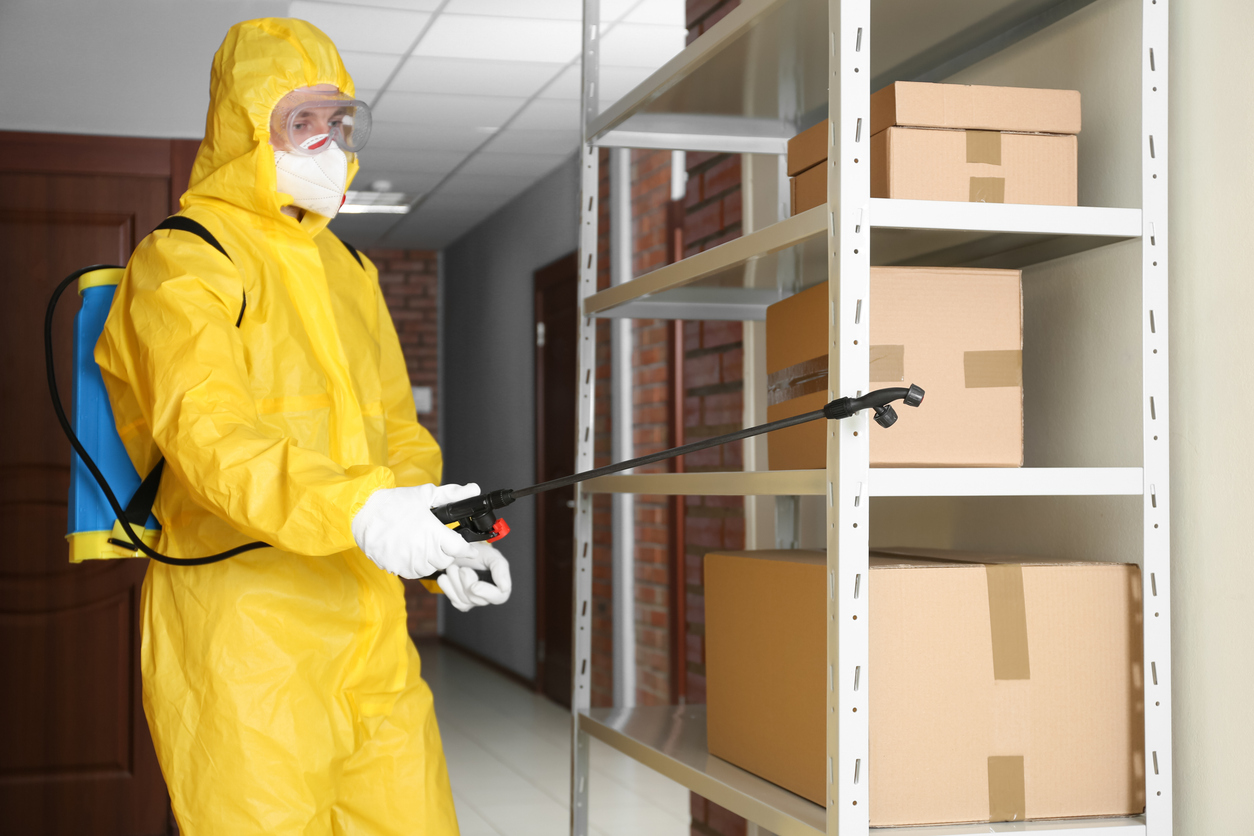Crunching numbers is key for any business owner, and those who are starting or already running a pest control company are no exception. The core of financial health lies in understanding the pest control business profit margin calculation. This vital metric measures how much money you’re actually making after all your hard work zapping bugs and rodents. Remember, it’s not just about revenue; it’s what remains that counts.
It’s crucial to understand why profit margins matter and how to calculate them right down to the last cent, so we’ve created this pest control business profit margin calculation guide. As a pest control business owner, you’ll also get tips on managing costs effectively while maintaining service standards, plus smart pricing strategies to keep your bottom line healthy.
But there’s more — growing your potential customer base and offering diverse services can further expand profits. As demand for pest control continues to rise, stick around if you want to make every dollar count toward a profitable pest control operation.
Understanding Profit Margins in Pest Control

Running a pest control business involves more than just eliminating bugs and rodents; it’s also about maintaining the financial health of your company. A key indicator of financial health for any business, in this case, the pest control market, is profit margin, which essentially shows how much out of every dollar earned is actual profit after expenses. Calculating it accurately can help you make informed decisions about pricing, cost-cutting measures, and growth strategies.
Step 1: Understand Gross Profit
The first step in calculating your business’s profit margin is determining your gross profit. This figure represents the total revenue from services minus the direct costs associated with delivering those services, such as labor, equipment, and materials. To calculate it:
- Determine total revenue by adding up all income generated
- Subtract direct costs (labor and material) from this number
Step 2: Calculate Net Income
Your net income, or net profit, takes into account all pest control business operations expenses not directly tied to service delivery, such as office rent, marketing expenses derived from marketing strategies, and other business costs that don’t directly correlate with delivering a particular service. To find this figure:
- Add up all of your recorded operating expenses
- Deduct these expenses from the gross profit (obtained in Step 1)
Step 3: Determine Your Profit Margin
To determine your overall profit margin:
- Divide net income by total revenue
- Multiply the result by 100 to get a percentage — that’s your company’s profit margin
This calculation provides insight into how much of every dollar earned becomes actual profit after accounting for both direct and indirect costs.
Remember that a higher percentage indicates greater efficiency in converting revenues into profits, a key aspect of a successful pest control business. As a whole, the pest control industry has experienced profit margin growth of 1% over the past five years, hovering at 13.7%.
Factors Influencing Profit Margins in Pest Control
Your bottom line doesn’t exist in isolation; it’s affected by various factors like company size and market competition. A small pest control outfit might have different financial dynamics compared to larger companies due to economies of scale. Meanwhile, intense competition could squeeze margins as businesses vie for customers through pricing strategies or enhanced service offerings.
Diving deeper into these influences reveals even more nuance: The value proposition offered via mosquito control services may differ significantly from general pest management solutions regarding cost structure and resulting profits, underscoring why each segment must be analyzed with its own unique metrics when assessing overall profitability. If not, you’re comparing apples to oranges.
Cost Management Strategies for Pest Control Companies

In pursuit of optimal gross margins — a metric that reflects earnings before subtracting overheads — you have to scrutinize spending patterns meticulously while simultaneously seeking avenues for growth. These might include expanding into lawn care or other comparable services to expand your offerings or enhancing current offerings to better accommodate the seasonality of pests in your particular region.
Identifying Overhead Costs
Beyond the obvious expenditures in your financial plan, such as pesticides and traps, running a pest control operation also involves a number of fixed costs. One that isn’t always mentioned is insurance coverage, which should never be overlooked; insurance is essential to helping businesses navigate potentially disastrous unforeseen circumstances. Analyzing these recurring charges enables smarter decision-making toward minimizing unnecessary expenses and can lead to significant savings, which in turn allows for a more strategic allocation of funds. Reinvesting those savings in technological advancements or other areas that improve efficiency then allows you to give your business a competitive edge.
Get Started With Pest Control Software!
Operating Costs for Pest Control Companies
Pest control businesses, like any other enterprise, need to keep a tight rein on finances to stay profitable. Operating costs can gnaw at your bottom line if not managed carefully. With the right approach to cost management, you can outperform competitors, grow annual revenue, and inspire customer loyalty in potential buyers.
Lower Overhead Costs
The pest control industry is known for its reliance on specialized equipment and trained personnel, factors that contribute significantly to overhead costs. By examining these fixed startup costs closely, business owners can find ways to trim excess without compromising quality or safety to save on initial costs. A regular review of vendor contracts might reveal opportunities for savings; negotiating better rates or finding more cost-effective suppliers could make all the difference in managing operating costs effectively.
Beyond renegotiating with vendors, another way business owners can minimize their overhead is by embracing technology solutions such as PestPac, which help streamline operations from scheduling services to handling customer communications efficiently. This reduction in manual tasks leads directly to reduced labor hours, which represent a significant portion of fixed costs.
You should also be sure to evaluate your fleet-related expenses and look for ways to reduce those costs. A significant opportunity for savings is adopting route optimization software into your processes. By ensuring technicians are spending as little time driving as possible, you can see an immediate reduction in fuel costs as well as maintenance costs that come with regular wear and tear. As an added bonus, optimized routing can also enable your business to bring in more revenue by servicing more customers without the need to hire additional technicians.
When exploring ways to reduce drive time and associated expenses, also consider opportunities to effectively minimize trips to the office. If technicians live nearer to the areas they service, allowing them to start and end their day at home can add up. Similarly, taking advantage of technology for common processes like processing payments, scanning checks, and paying employees can save a trip back to the office at the end of the day.
Direct Costs vs Indirect Costs in Pest Control
Distinguishing between direct and indirect expenses allows for more nuanced budgeting decisions within your pest control company. Direct costs are tied to providing specific services — think chemicals used during treatments, for instance — and adjusting these requires careful consideration so as not to compromise effectiveness or regulatory compliance.
In contrast, indirect expenses such as office supplies or marketing activities offer greater flexibility when looking at areas where cuts may make sense. Strategic use of resources here can lead not only to lower operational expenditure but also potentially enhanced efficiency throughout your business processes overall. By tracking both types of expenses meticulously through platforms designed for this industry, like PestPac, pest control companies gain visibility into where their money goes every month. This lets them make informed decisions about what investments will truly drive growth potential versus those that simply add unnecessary spending over time.
Pricing Strategies for Enhanced Profitability

When it comes to pricing strategies, a one-size-fits-all approach just won’t cut it in the pest control industry. Effective cost management, paired with strategic pricing, is vital for maintaining a healthy profit margin.
Understanding Your Service’s Value Proposition
To start, let’s consider what sets your pest control service apart. Is it the speed, effectiveness, or perhaps an eco-friendly angle? By identifying your unique value proposition, you can set prices that not only reflect the quality of your service but also keep you competitive in the market. But remember: while customers are willing to pay more for certain benefits they perceive as valuable, setting prices too high might drive them toward competitors.
A crucial stat to keep in mind is that, on average, a healthy profit margin in field service industries hovers around 20%. This means if you’re bringing $100 through the door from business sales price alone, $20 should ideally be net income after expenses have been accounted for. If you recall the 13.7% industry statistic from above, you can see there is room for operational efficiency gains and cost-cutting measures within the pest control sector to be able to reach this target profit margin range.
Dynamic Pricing Models for Pest Control Services
Different customer bases will respond better to different pricing models. Consider dynamic pricing strategies that allow flexibility depending on demand or seasonality: this could mean higher rates during peak infestation seasons when mosquito control services are in high demand. Conversely, offering discounts during slower periods can help maintain cash flow and attract new clients without significantly hurting gross margins.
If overheads aren’t carefully controlled — think insurance coverage and employee wages — even seemingly profitable jobs can result in slim margins once expenses are tallied up.
Increase profits using Pest Control Software
One powerful tool that can help pest control companies boost their profits is utilizing specialized pest control software like PestPac. These platforms are designed to streamline operations, improve efficiency, and provide valuable insights into your business that can lead to increased revenue.
Benefits of Using PestPac for Your Pest Control Business
PestPac is a comprehensive software solution designed specifically for pest control businesses. Utilizing PestPac can offer numerous benefits to your company, including:
1. Increased efficiency: Streamlines various aspects of pest control operations, such as scheduling, billing, and customer communication. This can help businesses save time and resources by automating repetitive tasks and allowing technicians to focus on providing quality service to customers.
2. Improved customer service: Businesses can easily access customer information, history, and preferences, allowing them to provide personalized service and build stronger relationships with their clients. This can lead to higher customer satisfaction and retention rates.
3. Enhanced accuracy: Keeps track of all treatments performed, products used, and scheduling information, reducing the risk of errors or oversights. This ensures that technicians are following proper protocols and providing effective pest control solutions.
4. Reporting and Analytics: Offers valuable reporting and analytics capabilities, allowing businesses to track key performance metrics, identify trends, and make data-driven decisions. By analyzing this data, companies can optimize their operations, improve efficiency, and ultimately increase their bottom line.
Closing Thoughts
Maximizing profits in the pest control industry requires a combination of strategic pricing, operational efficiency, and utilizing advanced technology like PestPac. By implementing dynamic pricing models, controlling overhead costs, and leveraging software solutions like PestPac, pest control businesses can increase their profit margins and stay competitive in the market.
Partnering with PestPac can provide your business with the tools and support needed to achieve these goals. With its comprehensive features and benefits, PestPac can help streamline your operations, improve customer service, and drive profitability for your pest control business. Reserve your free consultation today!
Pest Control Business Profit Margin FAQs
Is pest control a profitable business?
Absolutely. With solid management, pest control can rake in profits by addressing the consistent demand for critter defense.
What are the profit margins for pest control?
Pest control profit margins hover around 20%, but this can swing based on operational efficiency and market factors.
What is the average revenue of a pest control company?
Average revenue varies widely, but many small to midsize companies pull in between $250,000 and $2 million annually.
I run a small pest control operation; do I really need software?
Absolutely! For small and midsize businesses (SMBs), the benefits that come with industry-specific software are invaluable. By taking advantage of pest control software to improve efficiencies across the board, SMBs can achieve more with their smaller staff while building a strong foundation that enables them to scale up more effectively down the road.




